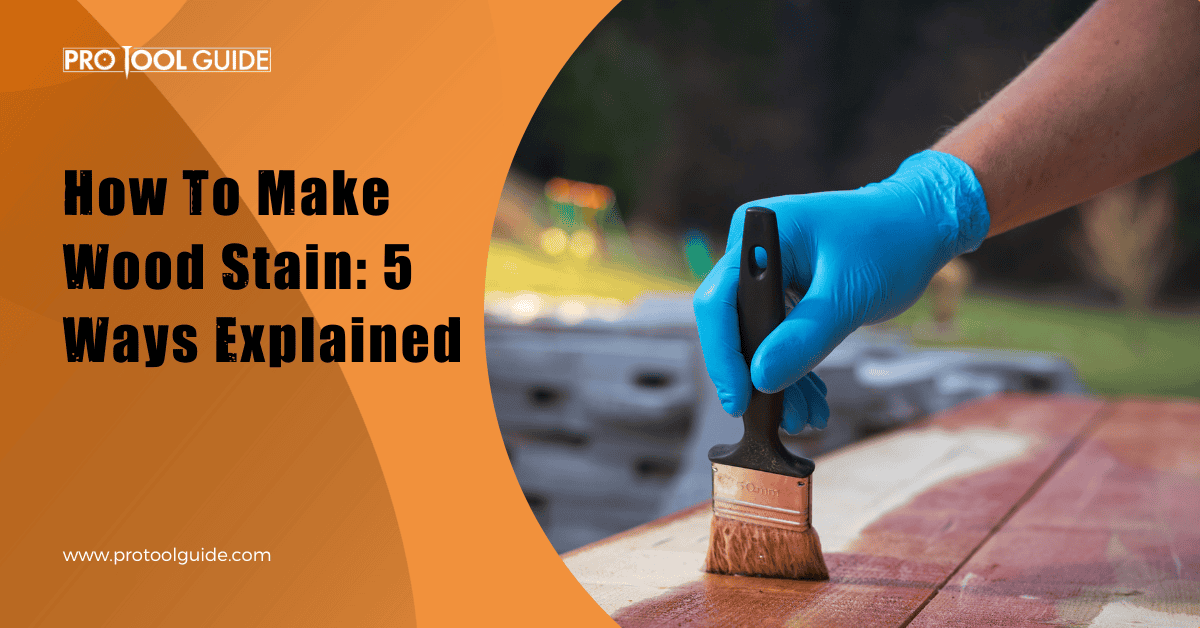Wood has different grain structures, hue, and look that sometimes make it unappealing. Other times, previously appealing wood loses its appeal with dust, dirt, and grime spoiling its surface. All these make using stains on wood vital if you want to get your desired look.
Wood stain is a suspension of pigments and dyes in a solvent, so it creates a light later on the wood surface that can provide better grain clarity, cloud the grain, and provide a suitable hue.
Most woodworkers know how important using wood stain is, but only a few know they can easily make their wood stain.
Instead of purchasing already-made wood stains from the market, there’s an option of making your desired wood stain, especially if you’re a DIY enthusiast.
Some of the materials for making DIY wood stains are easily accessible in your homes, and the process is unambiguous.
There are also several ways to make a DIY wood stain, so you’ll likely find a suitable option from the list. Before we see this list, why should you consider DIY wood stain?
Also Read:- How to Get Wood Stain Out of Clothes (A Step-By-Step Guide!)
Why Should You Make Your Wood Stain?
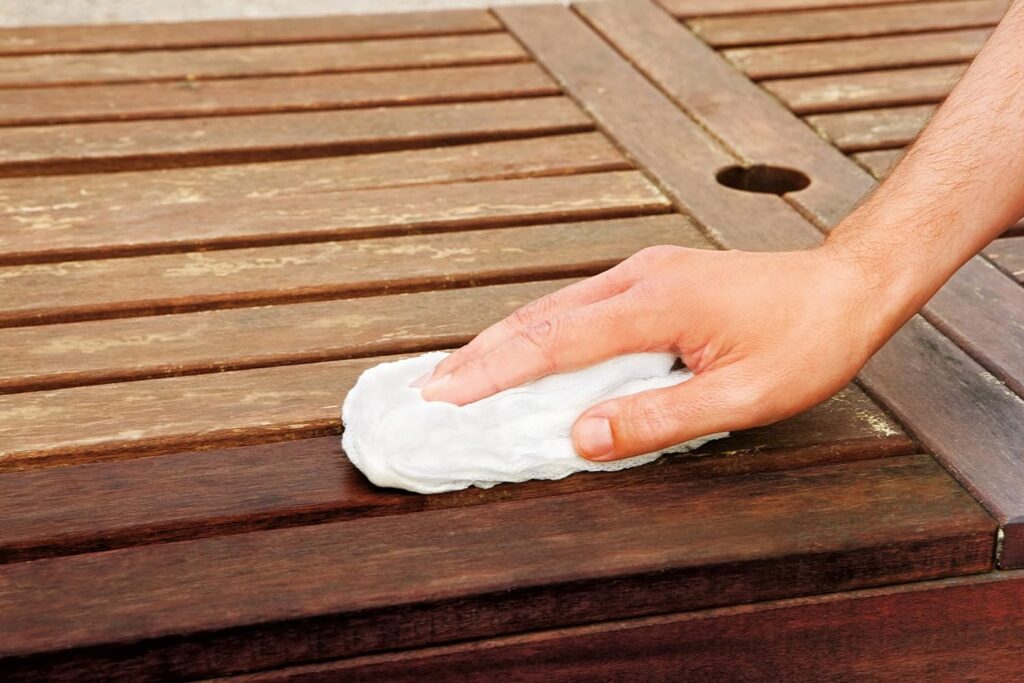
If you can buy wood stains from a woodworking or home improvement store near you, why should anyone consider making wood stain? Here are some of the reasons why you should make wood stain as against buying pre-made stains:
Reduce Cost
Buying already-made wood stains is expensive when compared to making your stain. However, seeing that some of the materials for making your stain are simple materials on your home shelves. So if you’re looking to save money, DIY wood stain is the way to go.
Control
Making wood stains instead of buying will give you better control as you decide what material to use, especially chemicals. Chemicals in wood stains are toxic and can cause a lot of damage in high concentrations. Avoiding chemicals, in general, is possible when you make wood stain from natural materials.
Explore Creativity
DIY enthusiasts love to make things for themselves as they try to explore their creative side. Making wood stain is not different and allows you to experiment with colors, materials, and the overall tone of the stain.
Types of Wood Stain Solvent
In making wood stains, the solvents are often the major difference as they determine the type of stain produced. There are several types of wood stain solvents where you can suspend the ingredients. Here are some of the most popular types:
- Alcohol: called non-grain raising as it does not cause the wood grains to rise
- Oil: by far the most popular type used by manufacturers. It features two types: a penetrating oil type that fades and a pigmented oil that is more consistent.
- Water: easily accessible
How to Make Wood Stain?
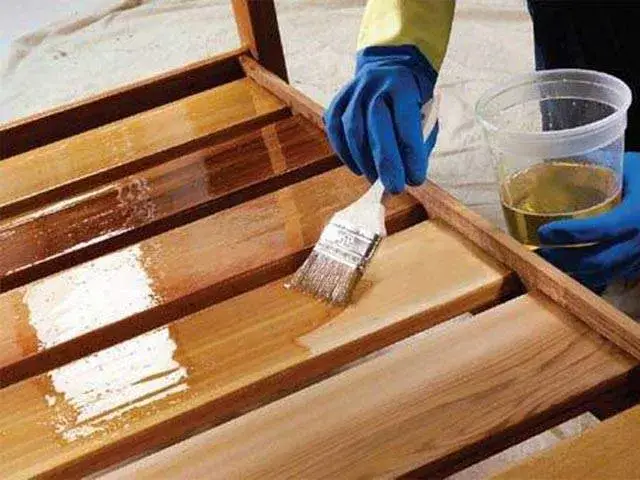
Making wood stains to replace the often expensive and highly toxic pre-made wood stains is easy with the proper guidance.
If you’ve ever wondered what it’ll take to complete a DIY wood stain project, here’s a comprehensive guide involving different ways to make wood stain.
Also Read:- How to Apply Stain to Wood (Step-by-Step Beginners Guide)
1. Vinegar and Steel Wool Pad
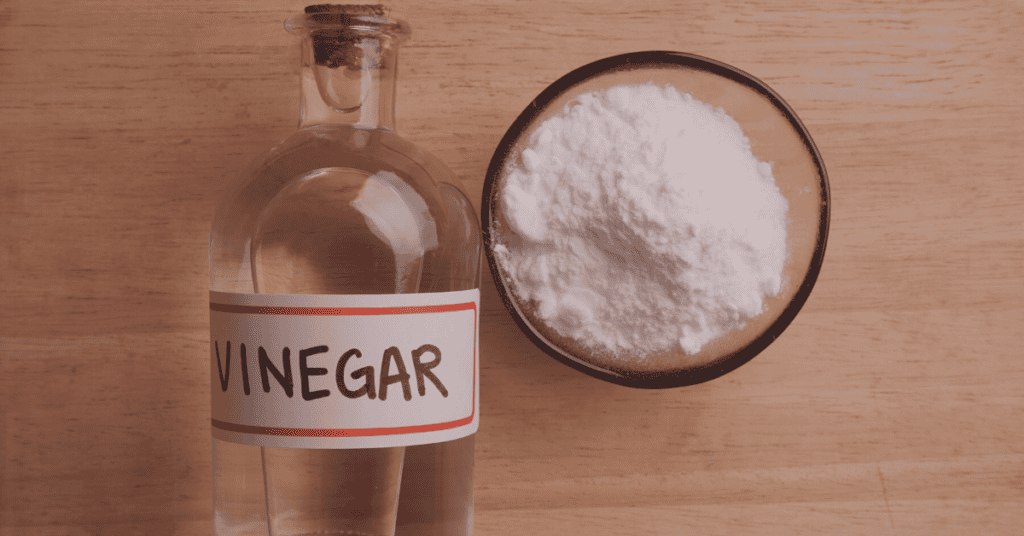
A combination of vinegar and steel wool pad can create the perfect stain for your wood, with the ability to get different hues depending on the type of vinegar you choose. If you cannot get a steel wool pad, you can use rusty nails, as they work just as well.
Different types of vinegar produce varying hues when steel wool pads or rusty nails are added. For example, you can use balsamic vinegar, white vinegar, or apple cider with a ratio of 1½ cups of vinegar to one steel wool pad.
- Put one steel wool pad inside a jar and pour 1½ cups of your chosen vinegar inside.
- Loosely cover the jar so air can pass through to complete the reaction.
- Allow for at least 24 hours for the reaction between the vinegar, steel wool pad, or rusty nails and air to happen.
- Take out the steel wool pad or nails and use the solution to stain wood.
First, test the stain by brushing it onto wood, and you’ll notice the white vinegar solution gives the darkest stain, even though balsamic vinegar is dark.
Next, apply the stain and leave for about 10 minutes to see the true stain color on the wood.
Typically, the longer you leave the steel wool in the vinegar, the darker the stain it produces and the smaller the wool pad remains. You’ll notice that the steel wool pad has shrunk in size.
2. Coffee or Tea

Brewing coffee or tea is a great way to start your day and can also be a great wood stain option. Brew strong coffee or tea and apply it to the wood you want to stain.
The tannins in the tea and coffee will stain the wood and darken its color. Before using it for the project, it is best to test this color on a random piece of wood.
3. Food Coloring
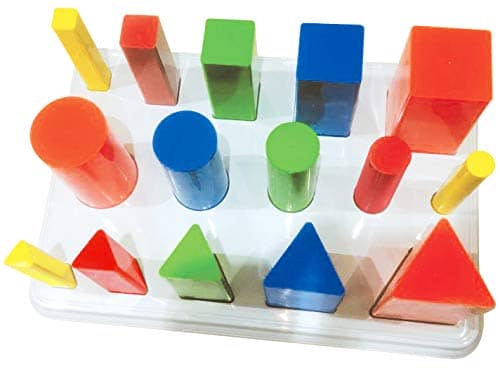
Food coloring can do more than give color when baking. You can choose from different types of food coloring, but neon coloring gives you more hue options.
Plus, you’ll need alcohol as a solvent for this type of wood stain and a disposable cup for mixing.
- Pour alcohol and food coloring into the disposable cup in a ratio of 1:10, with the total quantity dependent on the size of your project. However, the minimum amount to get good coloring is one drop of alcohol to ten drops of food coloring. You can experiment by mixing several colors from the neon collection to create different hues.
- Mix the combination and test it on a small piece of wood to see the hue before applying it to the project.
Stains using alcohol as a solvent are fast-drying so that you can apply several coats quickly. Remember that you’ll need several layers of this stain to achieve a good wood tone.
4. Black Walnut Husk
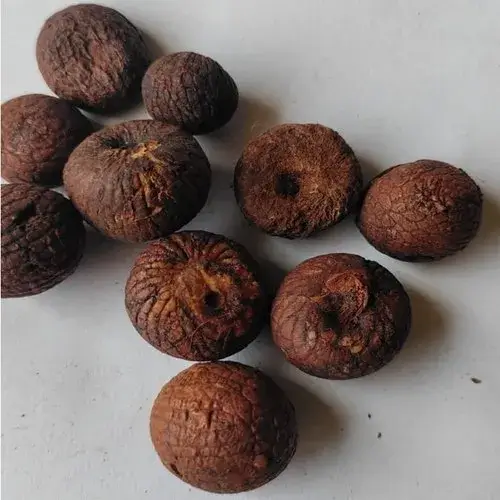
If you have access to black walnuts, you can use the husks to make a good wood stain. Enjoy the highly nutritious nuts and use the husks and water to stain wood.
- Dry the husk properly before anything to ensure you get a dark brown color instead of an unappealing murky green.
- Soak the dried husks in water for some hours. Use a small quantity of water so you can dilute where necessary.
- Remove the husks and apply the liquid to a small piece of wood to see its hue.
- Dilute if the liquid is too dark.
5. Diluted Acrylic Paint
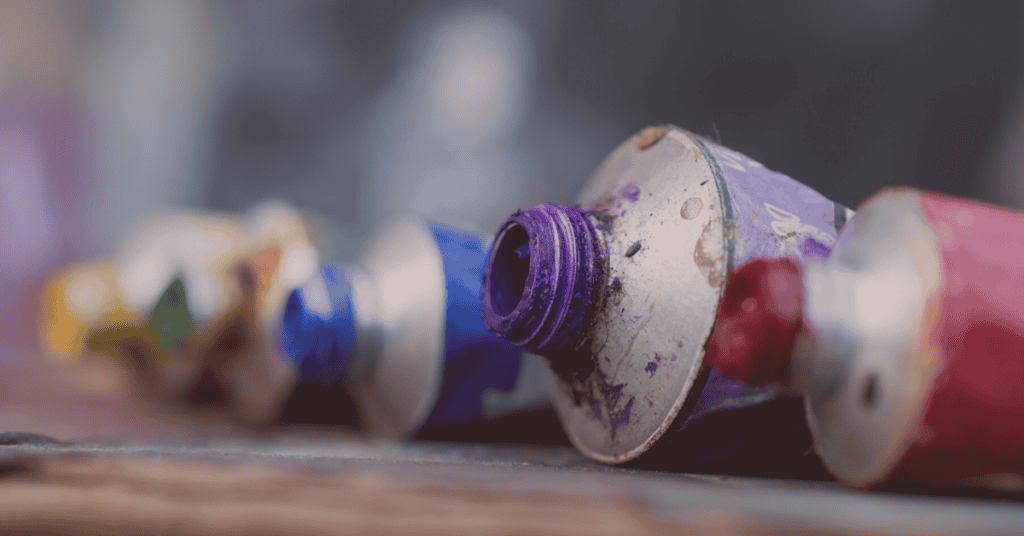
Acrylic paint can serve as a wood stain with the right dilution. This method will prove cost-effective if you have remaining acrylic paint from a project. Since acrylic paint is fast-drying with its pigment suspended in acrylic, it is similar to typical wood stains. As in this method, other water-based paint or ink can make wood stains.
Often, color is sacrificed for seeing the wood grains and vice versa, but it doesn’t have to be so; you can get the two using this diluted acrylic paint method.
Dilute the acrylic paint with water in a ratio of 1:1 and apply it to the wood as you would paint. You’ll get your chosen hue while seeing the wood grain.
Also Read: 14 Amazing DIY Wooden Christmas Tree Ideas For This Christmas
Tips for Making Wood Stain
Here are some extra tips to help you make good wood stains:
- You may need conditioners to even out the wood dryness and ensure consistent hue across the wood. Using wood conditioner is especially important on old wood.
- Apart from a few stains, like using diluted acrylic paint, most other stains work better on unfinished wood and wood that has been sanded to strip them off any coat.
- It may take some time to see results, so patience is key between each coat. Some methods do not give instant results and may take 5 minutes to an hour to show the right hue.
- Use scrap wood from the same wood to test the stain before applying it to the project to get a feel for the hue and feel of that particular wood type.
- Use the stain as soon as possible to enjoy its intensity, as it tends to lose with time. Ensure to finish the stain within the first month of making it.
- Applying finishing wax or oil to the project will shine the stain and make the hue sharper. This addition is optional and depends on the final look you intend to achieve.
- Some stain types, like those made from steel wool or rusty nails, may leave powdery rust-like particles on the wood after staining. Use a dry rag to wipe these particles off the wood after it has dried.
Summary
Choosing between using pre-made wood stain or making your stain will require some considerations.
The process involves natural and less toxic ways to make stains for your wooden projects, including details on how to make the stains.
However, the process becomes straightforward once you’ve decided to make your wood stain, with several methods available.

